The Green Mound Juniper, also known as Juniperus procumbens nana, is a small evergreen shrub with a distinctive appearance. Its foliage consists of scale-like and needle-like leaves that range in color from bluish-green to silver-green. One of the standout features of this bonsai tree is the presence of deadwood, known as jins and shari, which adds a unique aesthetic appeal. The silvery-white deadwood creates a striking contrast against the vibrant green foliage. The Green Mound Juniper is native to mountains in Southwest Asia, Europe, and North America.
Key Takeaways:
- Green Mound Juniper is a low-maintenance bonsai known for its beautiful appearance.
- It requires at least four hours of direct sunlight daily.
Appearance of the Green Mound Juniper
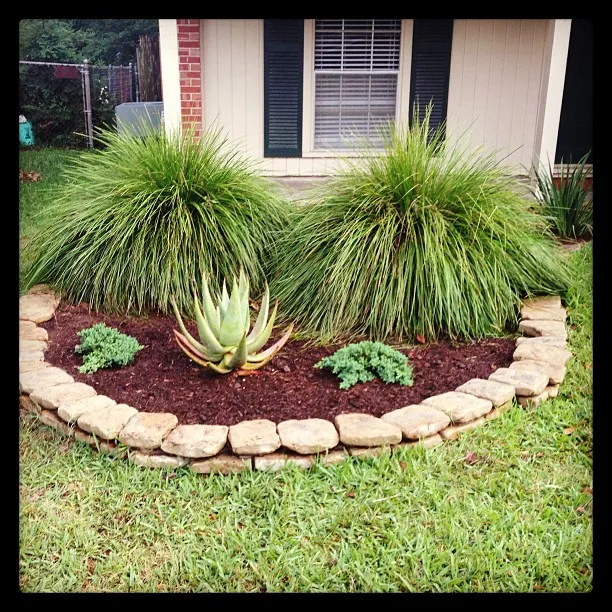
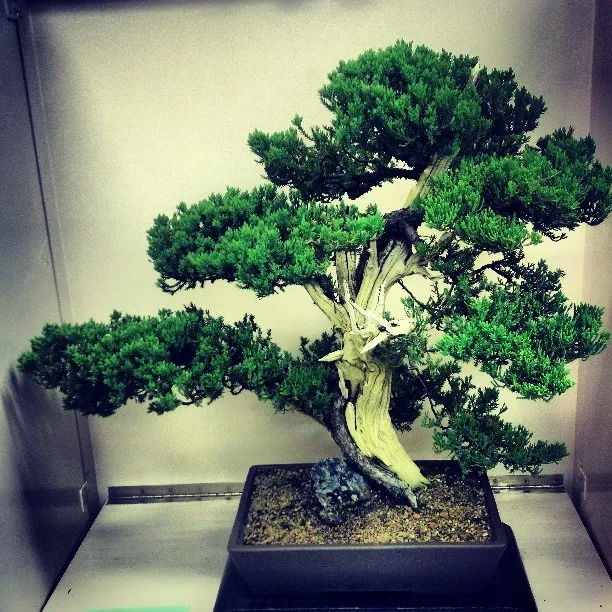
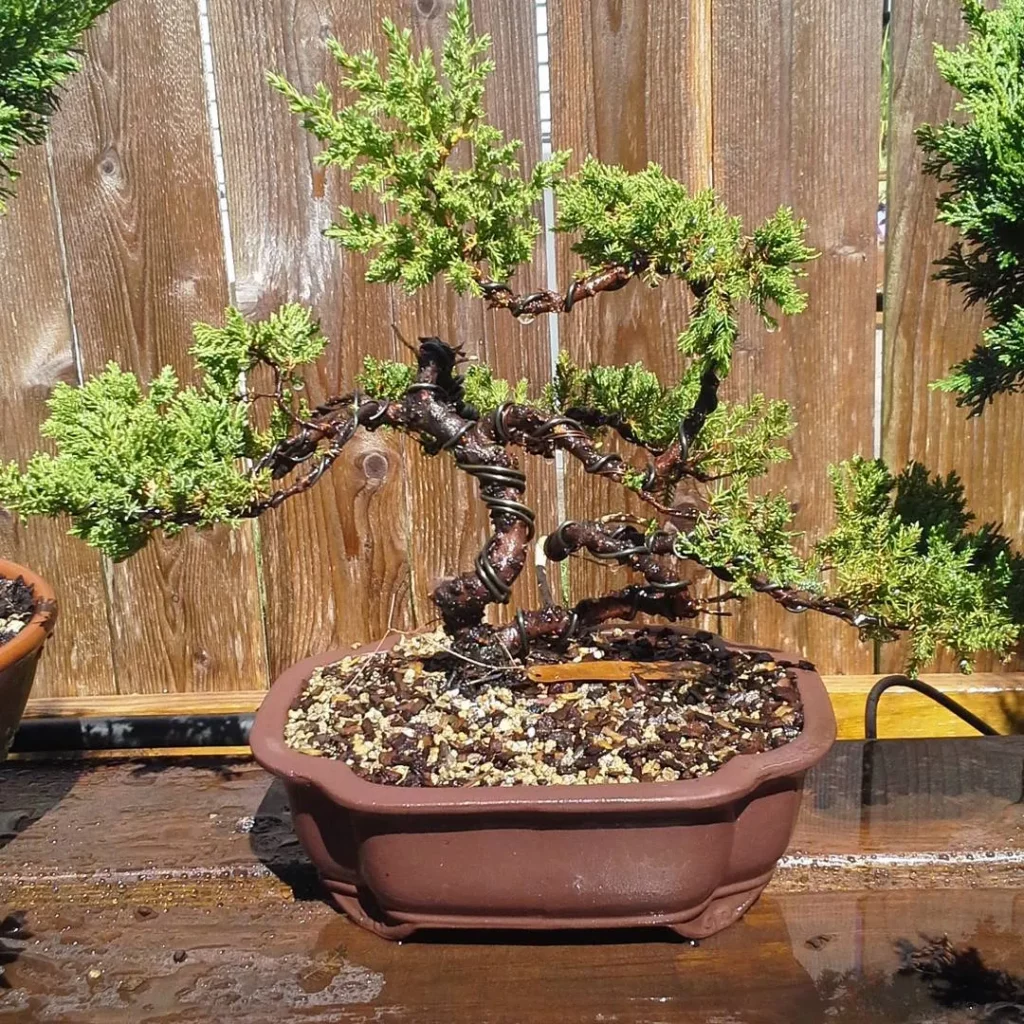
Being a versatile bonsai tree, the Green Mound Juniper can be grown in various bonsai styles, including the informal upright style, slanting style, semi or fully cascade style, multiple trunks, or even as a bonsai raft or forest. Its creeping growth habit makes it suitable for cascading or trailing styles, while its compact foliage lends itself well to upright or formal styles. With its attractive appearance and ability to adapt to different styles, the Green Mound Juniper is a popular choice among bonsai enthusiasts.
In summary, the Green Mound Juniper is a small evergreen bonsai tree known for its scale-like and needle-like foliage in shades of bluish-green to silver-green. The presence of deadwood, or jins and shari, adds a unique aesthetic appeal. This versatile bonsai tree can be styled in various ways, ranging from the informal upright style to cascading or multiple trunks. Its adaptability and striking appearance make it a popular choice for bonsai enthusiasts.
No products found.
Light Requirements for the Green Mound Juniper

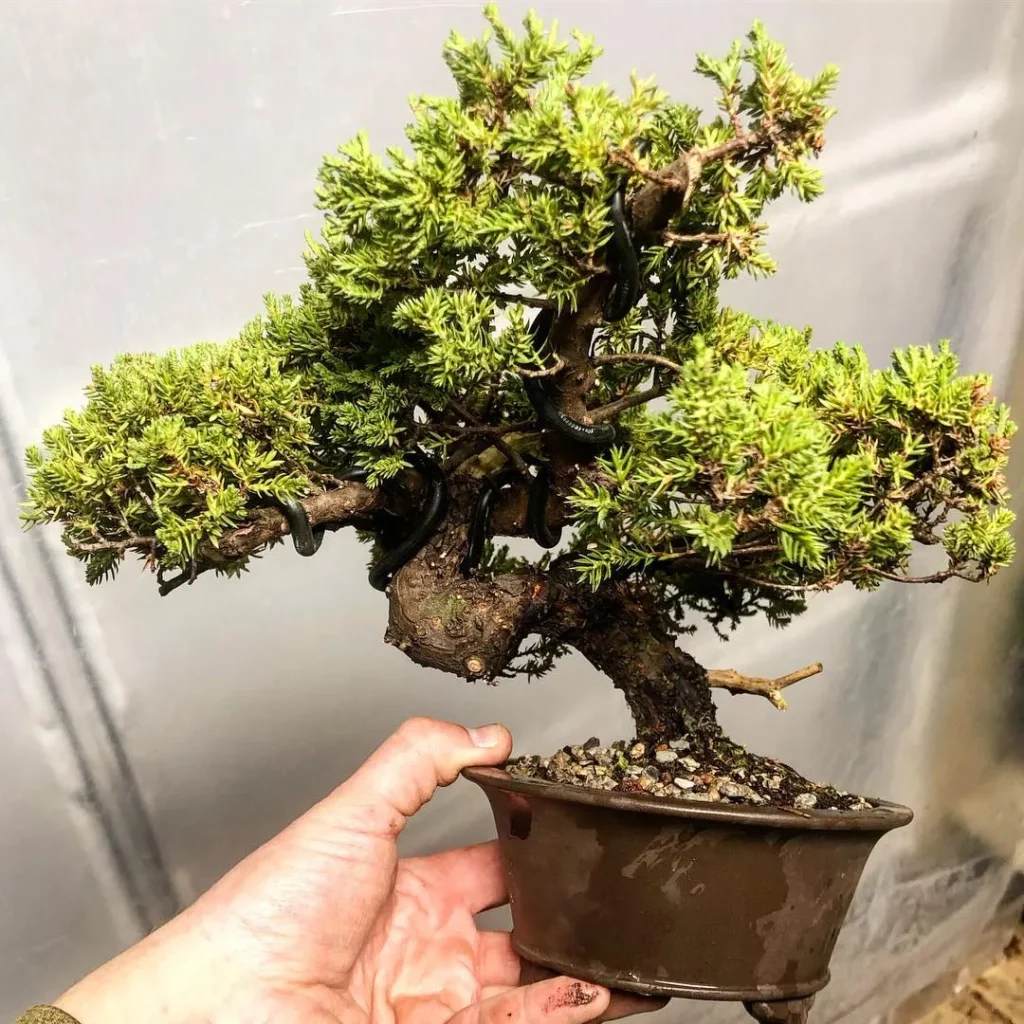
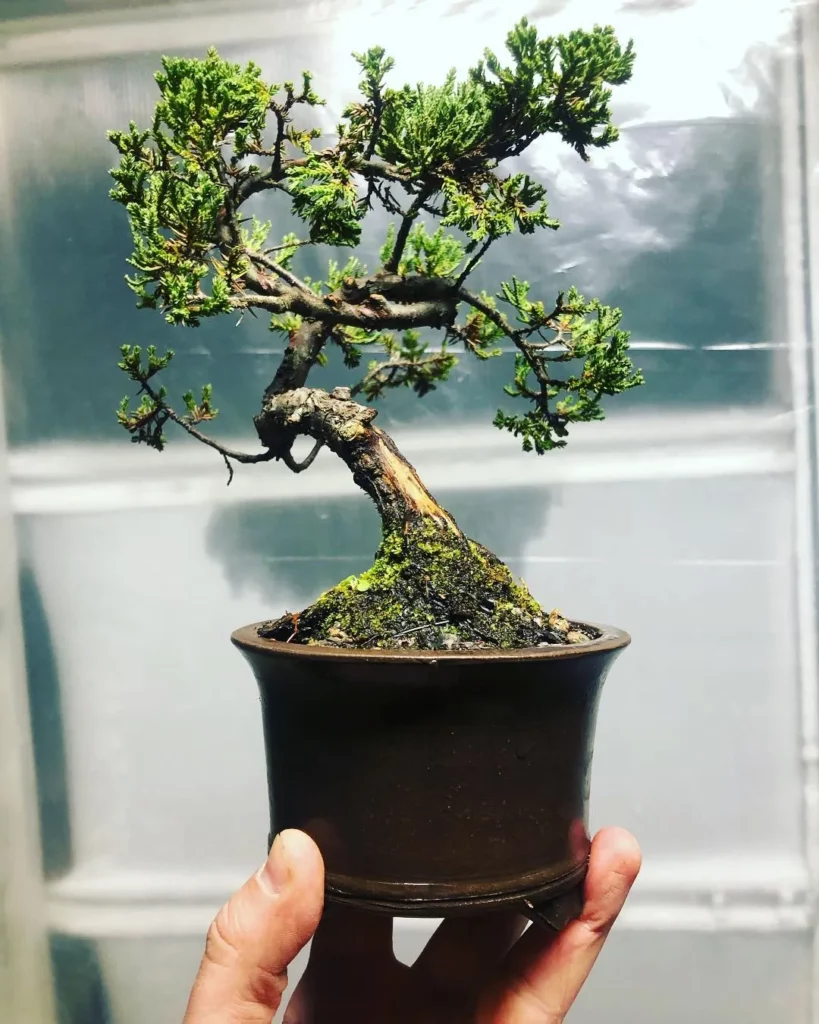
Proper lighting is essential for the healthy growth of your Green Mound Juniper bonsai tree. This hardy plant thrives in bright outdoor locations, receiving a minimum of four hours of direct sunlight each day. Sunlight is crucial for photosynthesis, the process that enables the tree to convert light into energy and promote lush foliage growth with vibrant green leaves.
Morning sun and afternoon shade: The ideal placement for your Green Mound Juniper is a spot where it can enjoy morning sun and afternoon shade. This balance of sunlight and shade protects the leaves from excessive heat, preventing any damage that high temperatures can cause.
Protecting your bonsai: It’s important to consider the outdoor environment where your bonsai is placed. Observe the location and make adjustments if necessary. If you notice that the tree is receiving too much direct sunlight, provide additional shade to prevent leaf burn. On the other hand, if the tree is not receiving enough sunlight, consider moving it to a brighter spot to promote healthy growth.
Lighting Tips for Your Green Mound Juniper Bonsai:
- Place your bonsai in a bright outdoor location.
- Ensure it receives a minimum of four hours of direct sunlight each day.
- Offer morning sun and afternoon shade for optimal light conditions.
- Protect the leaves from excessive heat to prevent leaf burn.
- Observe the outdoor environment and make necessary adjustments to lighting.
Watering the Green Mound Juniper
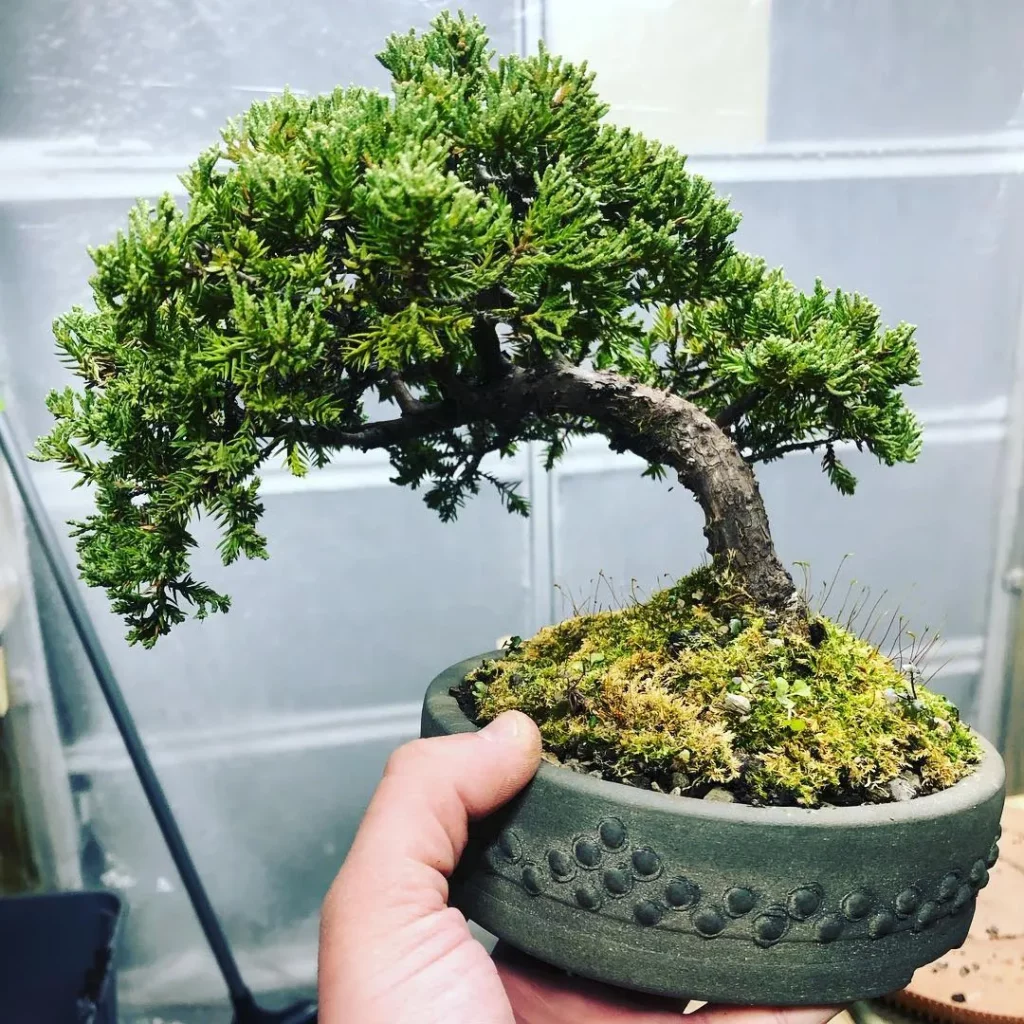
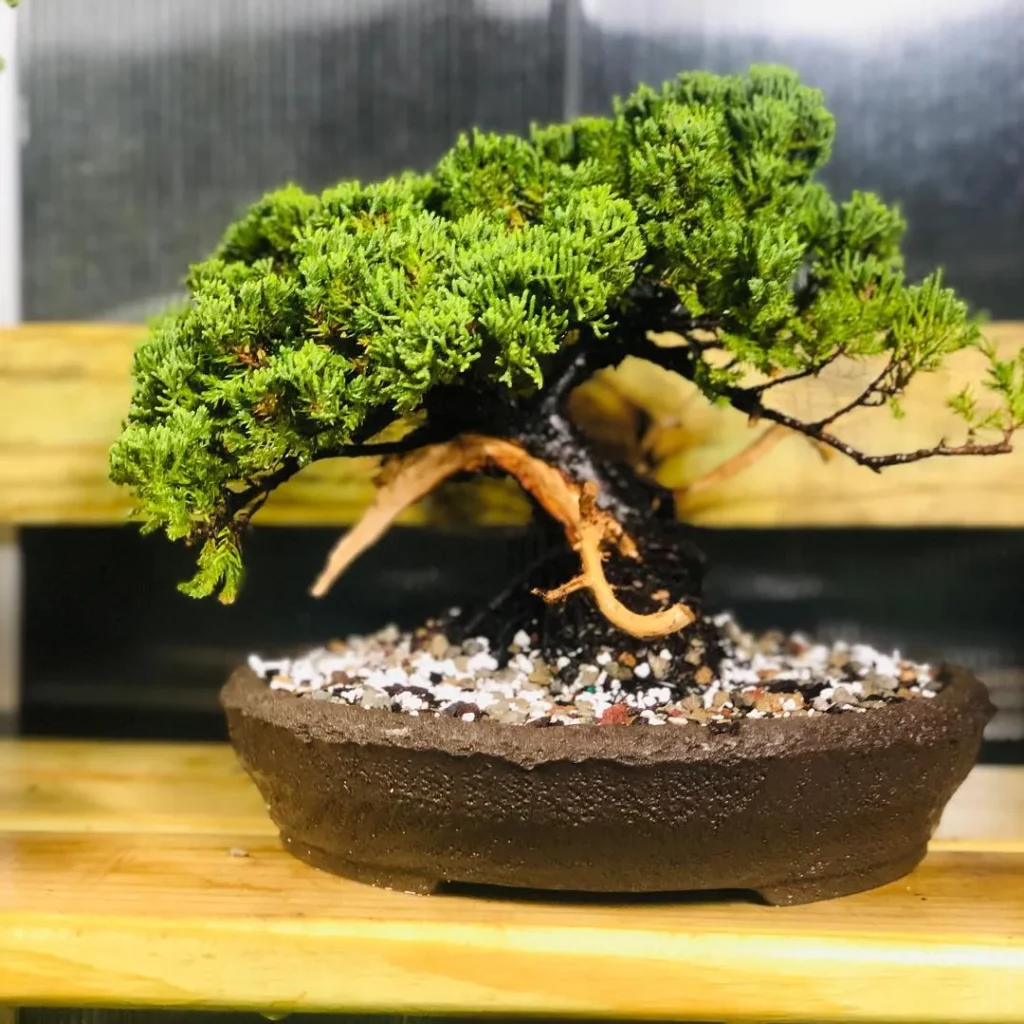
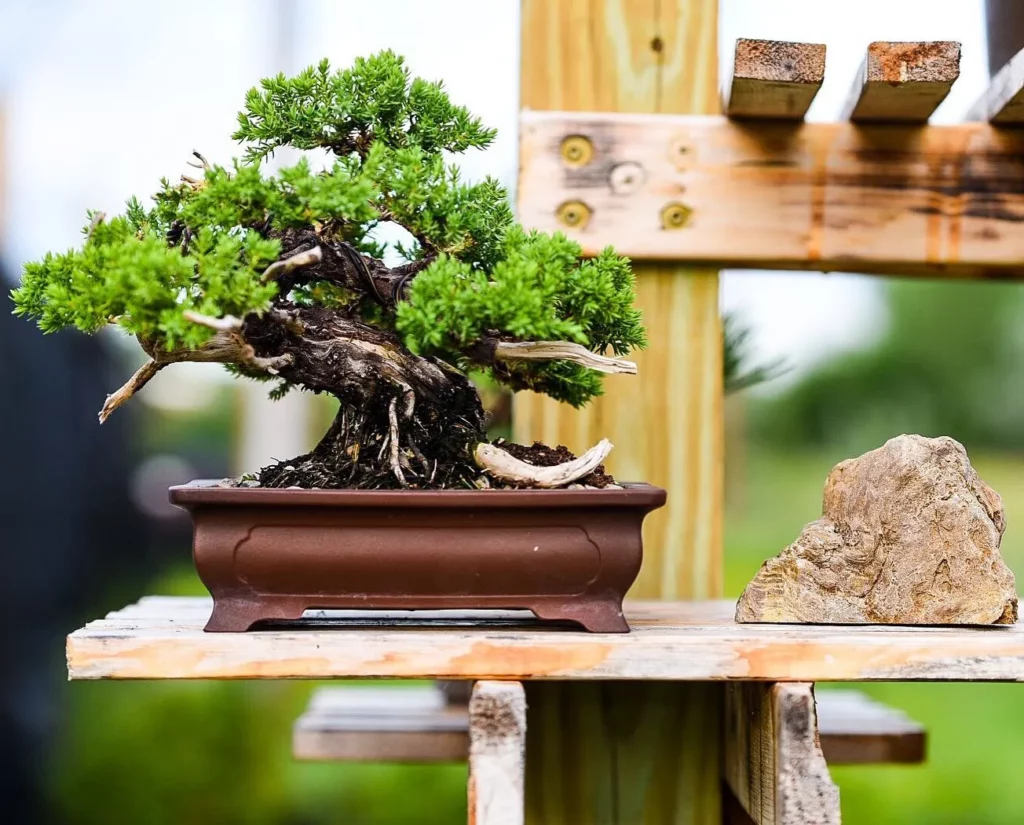
Proper watering is essential for the health and vitality of your Green Mound Juniper bonsai. Finding the right balance is key, as both overwatering and underwatering can be detrimental to the tree’s well-being. To gauge the watering needs, it is recommended to check the soil moisture level regularly.
Here are some useful techniques to determine when to water your Green Mound Juniper:
- Moisture Meter: Use a moisture meter to measure the moisture content of the soil. Water the bonsai when the meter indicates a slightly dry reading.
- Chopstick Technique: Insert a wooden chopstick into the soil and pull it out. If it comes out dry or slightly moist, it’s time to water the bonsai. If it’s still wet, wait for a few more days before watering.
- Weighing the Bonsai: Lift the bonsai pot to feel its weight. If it feels light, it indicates that the soil is dry and the bonsai needs watering.
- Soil Color: Observe the color of the soil. Dry soil usually appears lighter in color, while moist soil has a darker tone.
Fertilizing the Green Mound Juniper
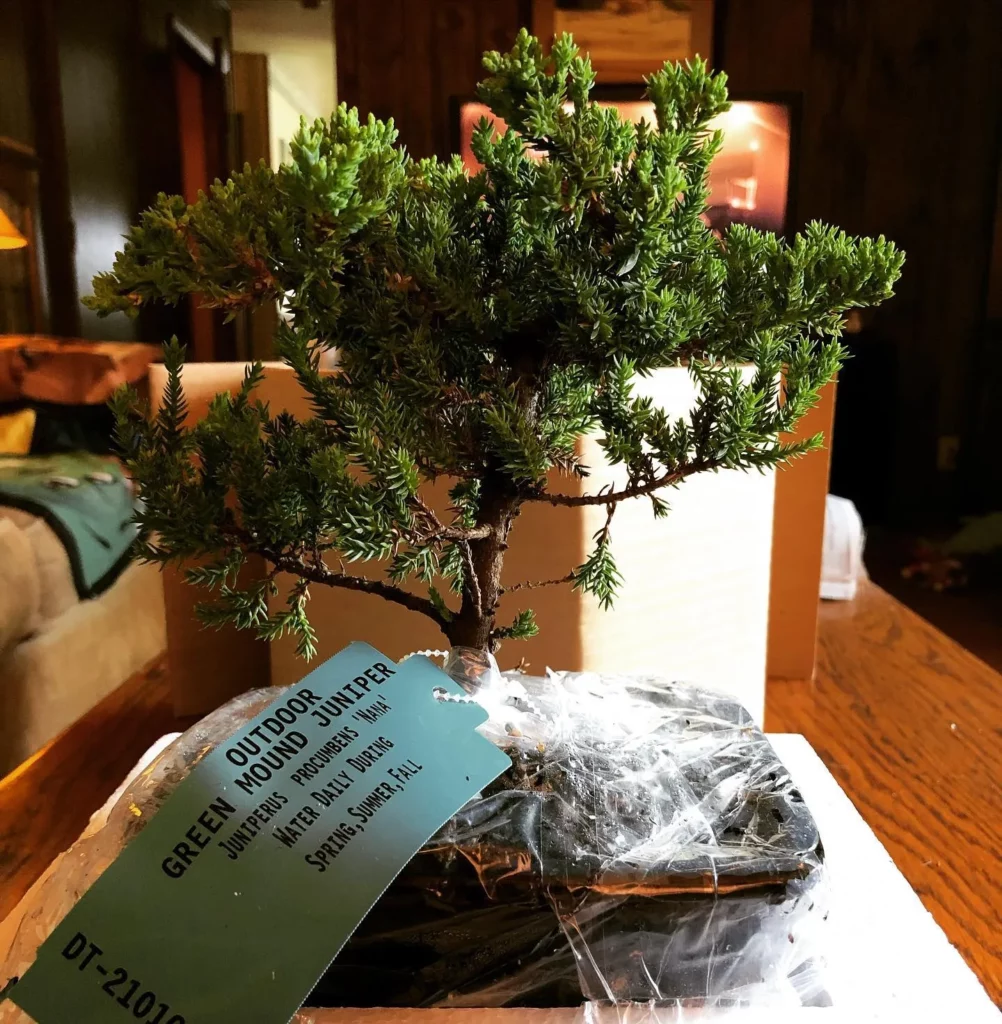
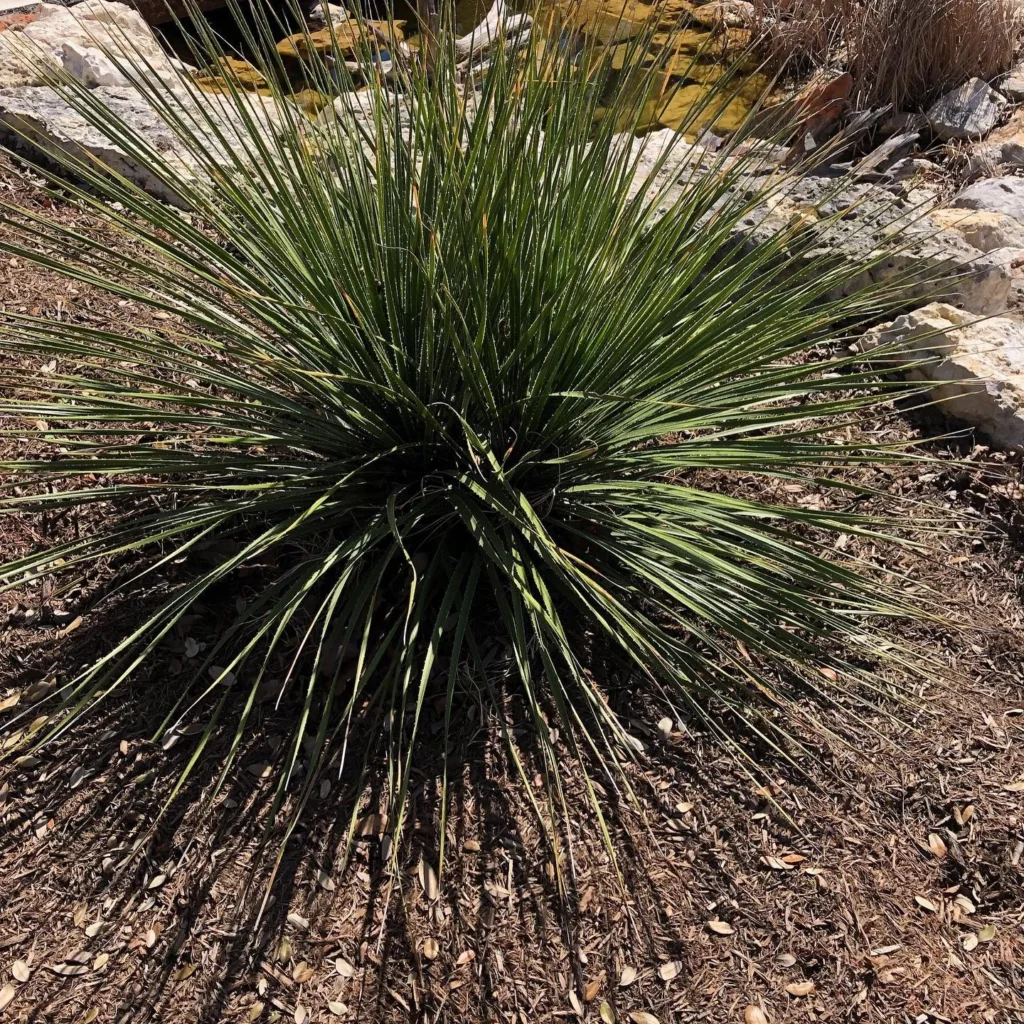

Proper fertilizing is crucial for the healthy growth and development of your Green Mound Juniper bonsai. By providing essential nutrients, you can ensure that your tree thrives and maintains its vibrant appearance.
Here are some expert tips on fertilizing your Green Mound Juniper:
- Use slow-release pellets: Applying slow-release pellets once a month during the growing season is an effective way to provide a steady supply of nutrients to your bonsai. These pellets slowly break down over time, ensuring a continuous release of essential elements.
- Opt for liquid fertilizers: Liquid fertilizers can be sprayed on the foliage or applied to the soil surface. They provide a quick boost of nutrients and are particularly beneficial during periods of active growth.
- Choose nitrogen-rich fertilizers: At the start of the growing season, opt for fertilizers that are rich in nitrogen. Nitrogen promotes lush foliage growth and helps your Green Mound Juniper establish a strong foundation.
- Avoid fertilizing in hot weather: It is important to refrain from applying liquid fertilizers during hot, sunny weather. This can potentially lead to leaf burn. Instead, fertilize during cooler parts of the day or during overcast weather.
Potting the Green Mound Juniper
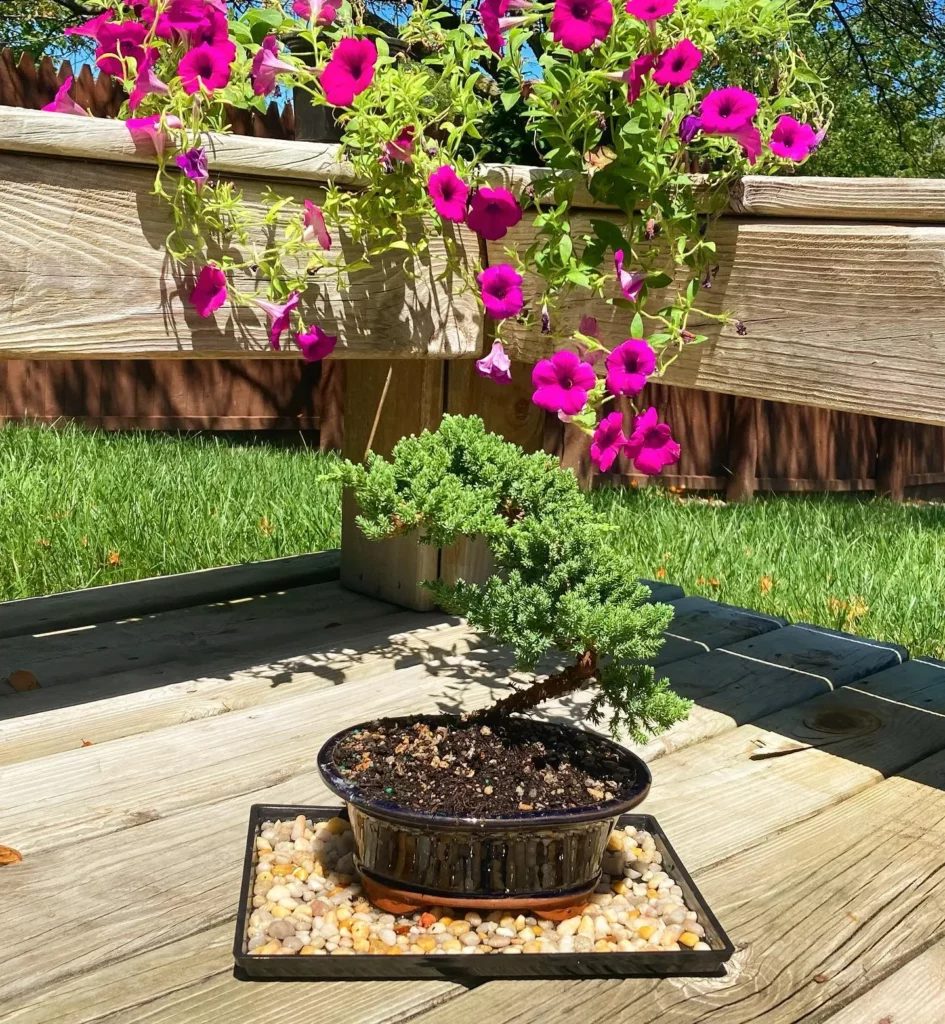
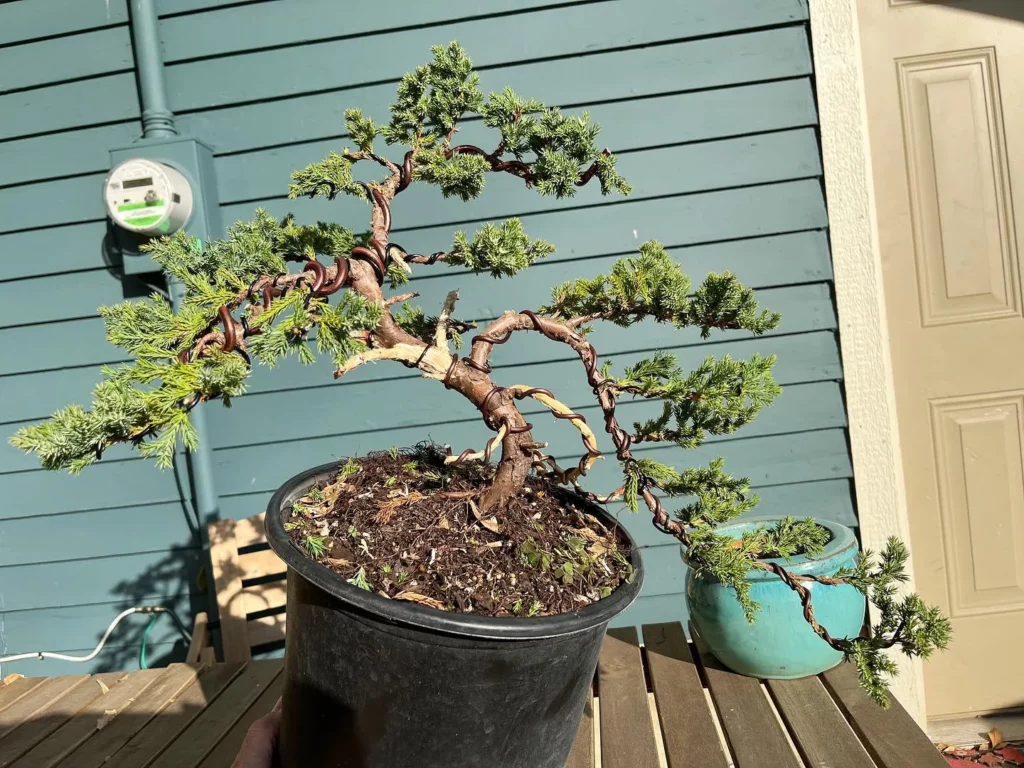
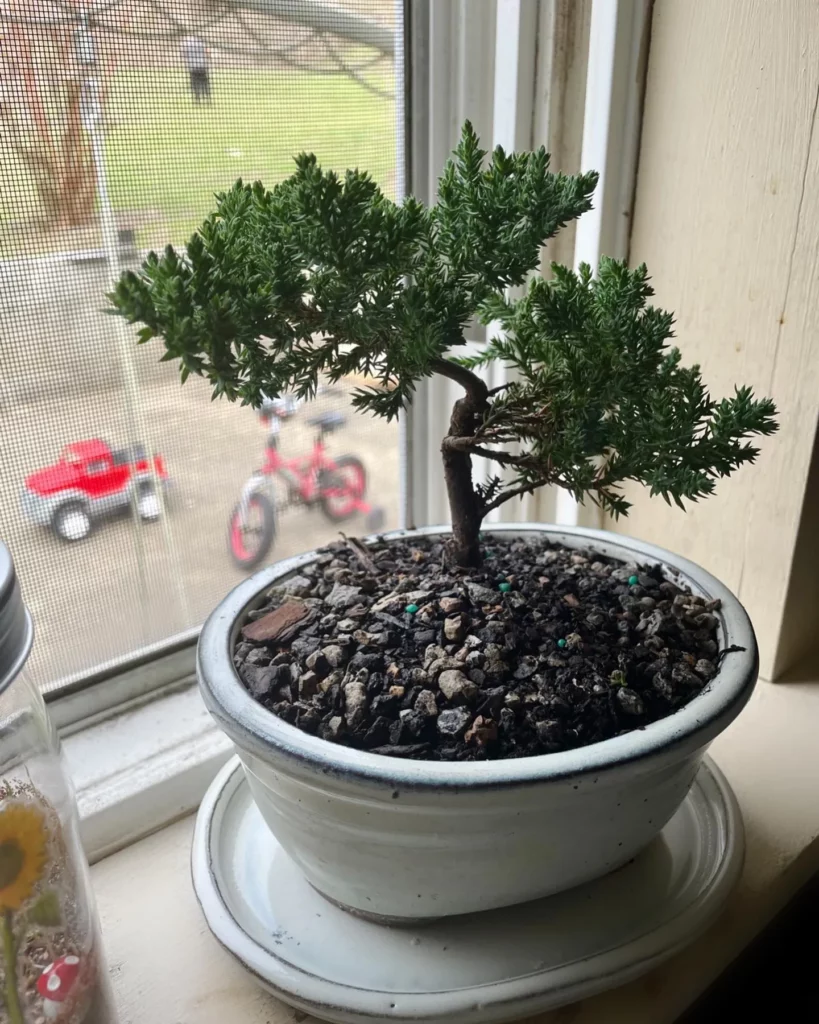
Proper potting is essential for maintaining the health and vitality of your Green Mound Juniper bonsai tree. Here are some expert tips to guide you through the potting process:
1. Repotting Frequency:
Repotting your Green Mound Juniper should be done approximately every two years. This allows for the renewal of the soil and promotes healthy root growth. As the tree matures, you can reduce the frequency of repotting to once every three to five years.
2. Timing:
The ideal time to repot your Green Mound Juniper is in early spring, just before the new buds begin to swell. This ensures that the tree has ample time to recover and establish new roots before the growing season kicks in.
3. Soil Mixture:
When repotting, use a well-draining soil mixture specifically designed for bonsai. The soil should allow for proper aeration and water drainage, preventing the roots from becoming waterlogged. A mixture of akadama, pumice, and lava rock is commonly used for Green Mound Junipers.
4. Pruning Roots:
During repotting, it is important not to prune the roots too aggressively. Gently loosen and remove any circling or matted roots to encourage outward growth. Be mindful of preserving the delicate feeder roots, as they play a crucial role in nutrient absorption.
Propagation of the Green Mound Juniper
Propagating the Green Mound Juniper can be done through seedlings or semi-hardwood cuttings, offering different methods to expand your collection. Here are the steps to propagate this beautiful bonsai tree:
- Propagation from Seedlings: Start by collecting fresh seeds from a mature Green Mound Juniper. Soak the seeds in water for 24 hours to enhance germination. Plant the seeds in a well-draining soil mix, covering them lightly. Maintain constant moisture and provide indirect sunlight. Germination can take several weeks to a few months. Once the seedlings have developed sufficient root systems, they can be transplanted into individual pots.
- Propagation from Semi-Hardwood Cuttings: Choose healthy, semi-hardwood stems from the mother plant during the growing season. Cut the stems just below a node and remove the lower foliage. Dip the cut end in a rooting hormone and place it in a suitable growing medium, such as a mix of perlite and peat moss. Keep the cuttings in a warm and humid environment with indirect sunlight. Mist the cuttings regularly to maintain moisture. Rooting can take several weeks to a few months. Once the cuttings have rooted, they can be potted individually.
Growth and Development of the Green Mound Juniper
The Green Mound Juniper is a bonsai tree that exhibits slow but steady growth, allowing for easier maintenance and shaping. With proper care and attention, you can encourage the tree to develop compact foliage pads and an elegant silhouette. Regular pruning and thinning out dense foliage pads will enhance the overall aesthetics of the tree, creating a more refined and balanced appearance.
One technique to enhance the growth and development of the Green Mound Juniper is wiring. By carefully wrapping wire around branches and gently bending them into desired positions, you can create beautiful and intricate shapes. However, it’s important to exercise caution and avoid applying too much pressure to prevent damaging the branches.
Enhancing the Deadwood Feature
The Green Mound Juniper is known for its unique feature of deadwood, which adds a touch of character to the tree. To enhance this aspect, you can use a variety of tools, such as carving knives and sandpaper, to carefully shape and texture the deadwood. This process requires patience and precision, but the end result is a striking and visually appealing bonsai tree.
The Aging Process
As the Green Mound Juniper ages, the deadwood feature becomes more prominent. This natural process creates a sense of maturity and adds to the overall charm of the tree. Over time, the branches may develop a more twisted and weathered appearance, further enhancing the visual appeal. Embracing the aging process is a key aspect of cultivating the Green Mound Juniper bonsai.
- Regular pruning and thinning out dense foliage pads.
- Using wiring techniques to create desired shapes.
- Enhancing the deadwood feature through careful shaping and texturing.
- Embracing the aging process to develop a more mature and visually appealing bonsai tree.
Pests and Diseases of the Green Mound Juniper
Keeping your Green Mound Juniper healthy and thriving involves being aware of potential pests and diseases that can affect this beautiful bonsai tree.
Common pests that may infest your Green Mound Juniper include spider mites, juniper scale, aphids, needle miners, and webworms. Regular monitoring of your tree’s foliage and early detection can help prevent these pests from causing widespread damage. If you notice any signs of infestation, it’s important to take action promptly.
Insecticide and miticide sprays can be effective in controlling pests and stopping their spread. Applying these treatments in accordance with the manufacturer’s instructions will help protect the health of your Green Mound Juniper.
Additionally, be on the lookout for rust fungus, which can affect some juniper species. This fungus can cause swellings and galls on the branches of your tree. If you notice any signs of rust fungus, it’s crucial to address the issue promptly to prevent further damage.
FAQ
What is the Green Mound Juniper?
The Green Mound Juniper, also known as Juniperus procumbens nana, is a popular bonsai tree known for its low-maintenance nature and beautiful appearance.
How does the Green Mound Juniper look?
The Green Mound Juniper is a small evergreen shrub with scale-like and needle-like foliage in shades of bluish-green to silver-green. It has distinctive deadwood features known as jins and shari, which add unique aesthetic appeal.
Where is the Green Mound Juniper native to?
The Green Mound Juniper is native to mountains in Southwest Asia, Europe, and North America.
How should I position the Green Mound Juniper for optimal growth?
The Green Mound Juniper thrives in a bright location outdoors, receiving at least four hours of direct sunlight each day. Morning sun and afternoon shade are ideal conditions for this bonsai tree.
How often should I water the Green Mound Juniper?
Water the Green Mound Juniper thoroughly once the soil feels slightly dry. It is important to strike a balance and avoid overwatering or allowing the soil to become bone-dry.
How often should I fertilize the Green Mound Juniper?
The Green Mound Juniper benefits from regular fertilizing during the growing season (early spring to mid-autumn) with slow-release pellets or liquid fertilizers. Nitrogen-rich fertilizers can be used at the start of the growing season.
How often should I repot the Green Mound Juniper?
The Green Mound Juniper should be repotted every two years, using a well-draining soil mixture. Early spring is the ideal time for repotting.
How can I propagate the Green Mound Juniper?
The Green Mound Juniper can be propagated from seedlings or semi-hardwood cuttings. Seed propagation takes time, while cuttings offer a quicker method.
How should I prune and shape the Green Mound Juniper?
The Green Mound Juniper can be pruned and shaped aggressively. Regular pruning, wiring, and thinning out dense foliage pads enhance the overall aesthetics of the tree.
What pests and diseases should I watch out for with the Green Mound Juniper?
Common pests include spider mites, juniper scale, aphids, needle miners, and webworms. Rust fungus can also affect the tree. Regular monitoring and early detection are key to preventing widespread infestations.




